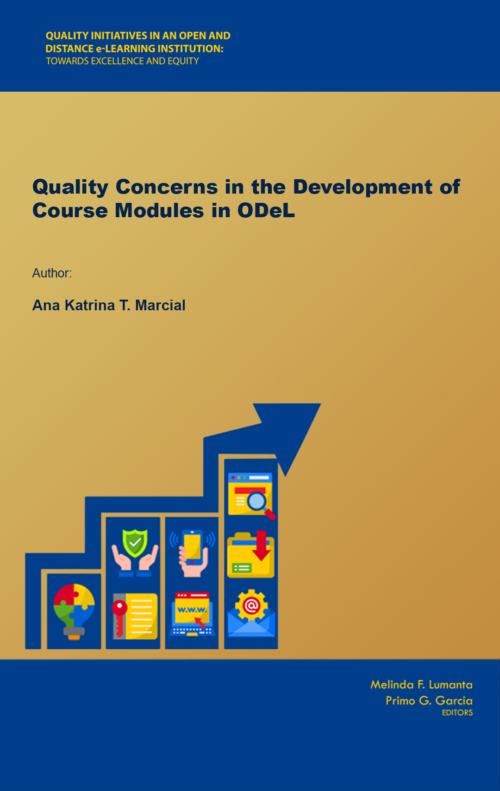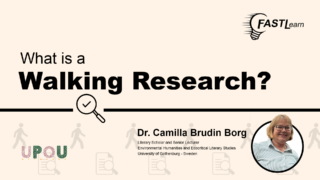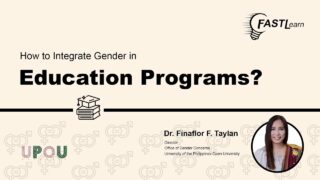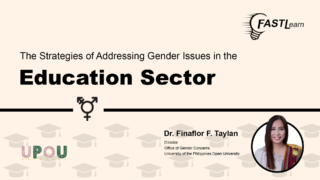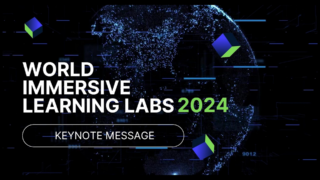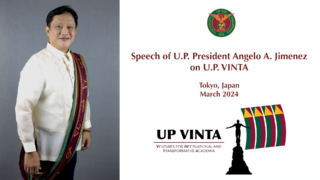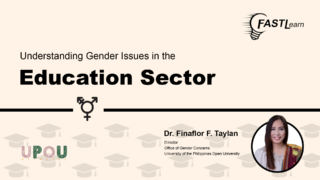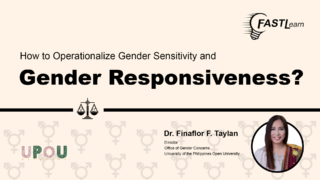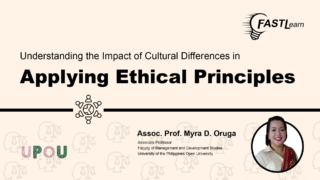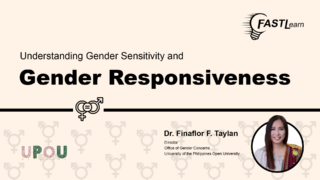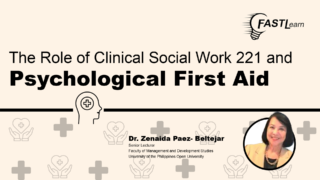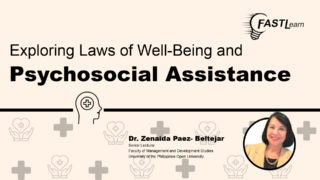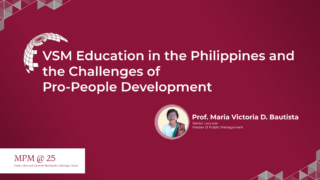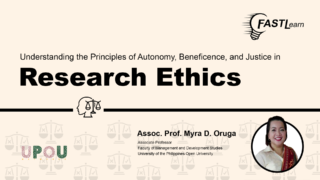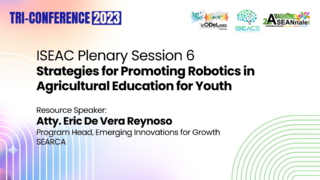The Office of the Academic Support and Instructional Services (OASIS) primarily aims to assist the Office of the Vice Chancellor for Academic Affairs (OVCAA) and the three Faculties (or Faculties of Studies) in the development and assessment of the resource-based course packages (RBCPs) used in the formal and nonformal programs of the university. The complete course development process serves as one reflection of the university’s attempts and practices at ensuring quality at the course level. This chapter details the changes and interpretations made by the university to clarify further what it means to design and use quality materials following a quality assurance (QA) system in a fully online teaching and learning environment.
Back when the University of the Philippines Open University (UPOU) was developing and producing print-based course materials, the course team approach was primarily adopted, with the team members as follows: course developer (course writer), reader, instructional designer, media specialist, (language) editor, and even an encoder (Garcia, 2014; University of the Philippines Board of Regents [UP BOR], 2001). Doing so had ensured that the course materials were of good quality, consistent with the standards of quality and excellence of the University of the Philippines (UP) system, on one end, and of the leading open universities around the globe, on the other. Variations to this approach were also adopted such as developing the materials through a series of workshops with the course developer and support staff and or developing modules as wrap around texts whenever published textbooks were already identified as the primary resource materials (UP BOR, 1995). It can be safely assumed, even then, that the preparation of course materials has been one of the university’s earlier manifestations of ensuring quality and observing quality standards.
When the UPOU pushed for offering courses fully online, the resource-based approach was adopted in developing the courses although the notion of working with a team to ensure the quality of the course materials remained, albeit with slight adjustments. Much like any other developments in the university’s growth, both as a constituent university of UP and as a premier open and distance e-learning (ODeL) institution in the country, the university also adjusted its instructional design (ID) methods as reflected in its course development process and guidelines. More specifically, the Office of the Academic Support and Instructional Services (OASIS), the unit mandated to assist the course developers of the Faculties, came up with an updated version of the process and a course development team in line with the resource-based approach.
Generally, the output expected from a course developer is a complete resource-based course package (RBCP) which consisted of the course modules, or more suitably termed as module study guides, the course guide, and other relevant guides such as the assignment guide (or a form of documented guidelines in doing the major requirements of a course), final exam guide, and even a guide for the preparation of the course site where a variety of resources will be uploaded or incorporated as embedded links (OASIS, 2014). The course modules may still be considered wrap around texts in the sense that they come in the form of study guides where carefully curated resources with annotations, instructions, discussions, as well as learning tasks nd assessments are coherently presented. These components of the RBCP are still reviewed to ensure quality. An assumption, and perhaps expectation, under the resource-based approach is that students engage in guided independent study through the course resources and activities made available in MyPortal, the university’s Modular Object- Oriented Dynamic Learning Environment (Moodle)-based virtual learning environment (VLE). The focus of the course developers has then evolved to ensuring that the course materials will enable and encourage the students to do just that. The shift, however, has come with its fair share of challenges, especially in relation to the roles and implementing guidelines ensuring and maintaining the quality of the university’s course materials in a fully online context.
This paper details the changes and interpretations made by the university to clarify further what it means to design, develop, and use materials in a fully online teaching and learning environment. Specifically, this paper focuses on describing how the ID process was operationalized and on identifying the strengths and weaknesses of the university’s course development or course module preparation in terms of the steps in the course development process, roles, and guidelines to elucidate on the concept of quality course materials in ODeL.
Stages in Course Design Models
Numerous studies have established that different ID models can be adopted to develop courses and prepare course materials both in a traditional classroom and in the ODeL setting, depending on the orientation an institution wishes to focus on (Caplan & Graham, 2008; Dousay, 2018; Holsombach-Ebner, 2013; Göksu, Özcan, Çakir, & Göktas, 2017; Gustafson & Branch, 2002). In the case of ODeL courses and from a product-based orientation, the generic five-phase model adopted by instructional designers and training developers known as the ADDIE model: (1) Analysis, (2) Design, (3) Development, (4) Implementation, and (5) Evaluation proves to be one of the most well-known (Bates, 2019; Buchanan, 2019; Gustafson & Branch, 2002; Piskurich, 2006). Dick and Carey’s systems-based ID model, on the other hand, serves as a more specific version and “features the following phases: (1) identifying instructional goals, (2) conducting instructional analysis, (3) identifying entry behaviors and learner characteristics, (4) writing performance objectives, (5) developing criterion referenced tests or other assessments, (6) developing instructional strategies, (7) developing and selecting instructional materials, (8), developing and conducting formative evaluation, and (9) developing and conducting summative evaluation,” with an additional phase dedicated to the revision of instructional methods when deem necessary (Dick, Carey, & Carey, 2015; Siemens, 2002). An alternative, especially for large-scale programs, is the cyclical Kemp model (Morrison, Ross, Kemp, & Kalman, 2010; Siemens, 2002) with its interdependent stages and nine design elements that may be addressed simultaneously, namely: (1) determining specific goals and instructional issues, (2) identifying the characteristics and needs of the learners, (3) clarifying course content in relation to the goals (4) defining in learning outcomes, (5) ensuring logical sequence of content, (6) designing instructional strategies, (7) planning the appropriate instructional message and mode of delivery, (8) developing the evaluation instruments to assess learners’ progress, and (9) choosing appropriate resources that will support the teaching and learning activities. Despite moving further
away from the traditional notion of ID being always linear with the idea that the processes in these models be an iterative one, subscribing to any of the models can still be too time-consuming and costly (Arinto, 2014; Bates, 2019; Buchanan, 2019; Sun & Chen, 2016; Thiagi, 2010; Tompkins, 2007; White, 2000).
In the case of developing the course materials at the UPOU, a clearer ID approach was adopted in the form of Rapid Instructional Design (RID) model, with six basic steps, to suit the fully online mode and in consideration of the load of the UPOU course developer who most likely serves as the first faculty-in-charge (FIC) to teach the course (Arinto, 2014). Compared with a more traditional ID process, RID was a more streamlined approach (Figure 1) although the basic aspects to consider are still evident in the course development steps as well as in the review stages. Additionally, UPOU emphasized the need to select and customize content and to design learning activities around this content as the two crucial steps in developing the module study guides to complete the UPOU RBCP (Figure 2) based on the assumption that a general learner profile is already available, at the very least, at the program level and that the course-level learning outcomes or objectives, approved from the program level up to the UP BOR, do not necessarily change during course delivery.
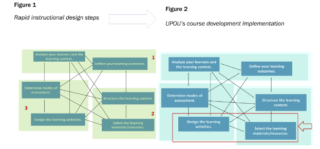
In the earlier stages of the course development, elements of the Backward Design Framework (Bowen, 2017; Iino, Celik, & Lutz, 2017; Wiggins & Mctighe, 1998) are also evident, especially in the refining of learning outcomes and structuring learning content stages such that the desired end results of a course (learning outcomes) are consciously considered in aligning and determining the rest of the elements of a course syllabus, which then serves as the framework for developing the RBCP.
Guidelines in the Course Design or Development
Regardless of the underlying design framework, the guidelines adopted in designing course content at the UPOU aim to reflect principles of good practice in teaching in the ODeL context by conscientiously considering the learners’ background and knowledge to maximize their learning, balancing content and skills development, and fostering interaction using various technologies through the development of the course materials, where initial activities and assessments are incorporated, prior to actual course delivery. In addition, the course design process continues by dynamically developing the RBCP based on insights gained from actual teaching practices and on the reviews of other experts and responses of the learners, consistent with the literature on effective teaching and course design presented in Table 1 and Table 2, respectively.
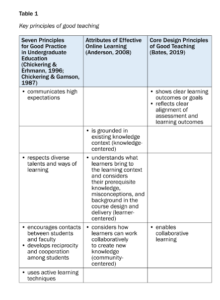
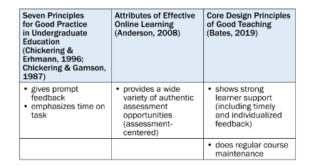
It can be surmised from the three sets of principles referenced above that effective teaching is almost always concerned with incorporating or demonstrating: (1) learner-centered practices, (2) constructive alignment, (3) collaborative, cooperative, and meaningful interactions (e.g., student- student, teacher-student, and content-student interactions), and (4) a variety of assessment and meaningful feedback within a specific set of knowledge domain/s throughout the teaching and learning process. In addition, at the level of success in course design, issues on learner-centeredness, appropriateness of learning environment, resources, and technologies, as well as communication and interaction, must be addressed, as you can see from the summary in Table 2.
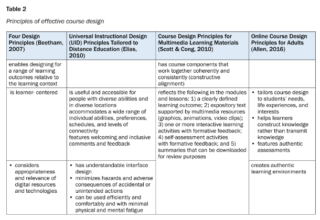

Roles in the Online Course Development Process
With adopting a more refined course development process and design framework comes the need to clarify the roles in online course development as well. As stated earlier, the UPOU did not let go of the notion of working with a team (collaborative approach) to ensure the quality of the course materials produced, which is consistent with the literature on collaborative models of developing courses online. In a study by Hixon (2008) on team- based course development, she summarized the team member roles “into five general categories: (1) project management, (2) subject matter expert/author, (3) instructional design, (4) technical support/production, and (5) other”—terms that also appear in several study projects and articles (Center for Teaching and Educational Technologies [CTET], n.d.; Holsombach-Ebner, 2013; Wright, 2011). In a study by Cuesta (2010), the course development team is divided into two: the academic group and the technical group, with an appointed director assigned to guide the rest of the course development team members and to design an action plan that meets institutional needs. Caplan and Graham (2008), on the other hand, emphasized the need for a central online development unit to ensure that “courses are of high quality and meet institutional guidelines” (p. 256). They used the term “para-academics” for the members of such development unit to liaise with the course author who is also considered the subject matter expert (SME), to obtain copyright permissions for elements which will be included as part of the course materials (when necessary), and to assume various responsibilities to ensure the quality of course materials which will be developed, produced, and or published. More specifically, they enumerated the roles as follows: project manager, copy editor, information technology expert, HTML and XML coder, media developer, instructional designer, graphic designer, administrative assistant and, sometimes, copyright officer (Caplan & Graham, 2008).
A comparison of the course development team members is presented in detail in the succeeding paragraphs, but one emerging common factor in all these studies, guidelines, and articles is the fact that developing (and reviewing) materials for a course and ensuring a successful course delivery take genuine collaboration and coordination among various professionals within an institution. The success of such a collaborative system relies on a multitude of complex factors such as the institution’s priorities and resources, the course developer and faculty’s readiness, engagement, and workload, even the nature of how ID is generally treated in relation to addressing the learners’ needs. Nevertheless, the UPOU continually and conscientiously adjusts accordingly whenever able.
A preliminary analysis of existing course development policies, implementation guidelines, and other university documents and data in relation to other institutions’ guidelines paints a picture of the systems already in place concerning course design and review to ensure and maintain quality; however, certain conditions still need to be sustainably addressed to deal with the challenges of designing course materials online and to maximize the advantages of a resource-based approach.
Three main recommendations were made by Arinto (2014) to ensure that the course design process succeeds: (1) implementing a holistic training program that involves training on design for learning, (2) providing a set of tools and resources such as frameworks, templates, guidelines, to help the faculty in the course design, and (3) adhering to a regular review of both processes and outcomes of course design. These recommendations are supported by Cuesta (2010) in her enumeration of the basic conditions for effective integration of technology in materials design: (1) lending technical expertise to assist the course developers, (2) implementing mechanisms for sufficient planning time, (3) offering different short-term and long-term training for the development of every team member, and (4) ensuring prompt access to various technologies.
Adjustments in the Course Development Team
In terms of addressing quality concerns during the process of course design, the UPOU’s roles within a team-based course development and review system that are in line with the resource-based approach may be categorized into four areas of concerns:(1) academic- and content-related, (2) management- and support-related, (3) style- and design-related, and (4) technical-related. Ideally, the process of planning, designing, and evaluating course materials should benefit from the involvement of a dynamic team that will actively work on a course, and UPOU has relatively ensured that these four areas of concerns in course development are covered by a course development team member for every course development project or contract. More roles have been added through the years as the university puts much emphasis on using open educational resources (OERs) instead of copyrighted materials, producing more multimedia materials, and addressing accessibility concerns, among others. Table 3 presents an initial comparison of the roles in a course development team based on selected studies and on the UPOU’s latest policy guidelines. The responsibilities assumed by each role reflect what Holsombach-Ebner (2013) refers to as the process and content development components of instructional design.
However, the reality of needing to develop multiple courses at a time necessitates one faculty or professional to assume more than one role, depending on his/her expertise and experience in relation to the institution’s resources and limitations. In UPOU, one solution explored, albeit inconsistently, is the conduct of orientation and consultation sessions with and for course developers, which is in line with what Shaver (2017) advocates for in her paper on the benefits of learning design meetings to the online course development process.
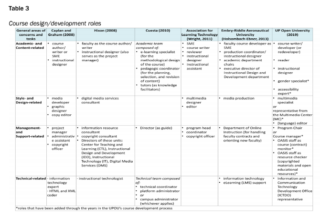
Adjustments in the Review Guidelines for Quality Course Materials
While it may be difficult to separate the evaluation of the quality of course materials developed from the quality of actual course delivery to complete the picture of effective online teaching since the boundaries between development and delivery in ODeL naturally becomes blurred, we can at least have an initial review of the components, sections, categories, or aspects that are reviewed in the various course design guidelines used by selected universities (or network of academic and state institutions) to evaluate and further refine course materials with a more diverse perspective (Table 4).
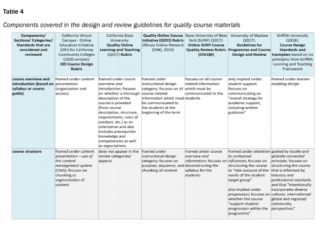
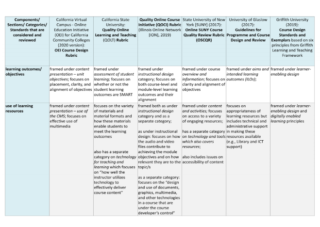
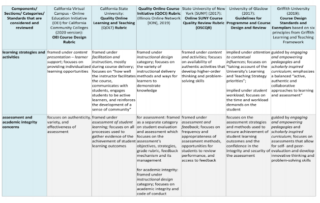
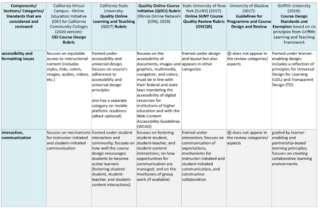
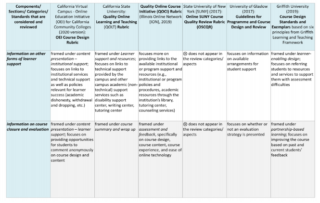
In terms of addressing quality concerns based on the outputs of the course development, the UPOU has continually developed evaluation instruments that may be comparable with the guidelines used in other universities to ensure and maintain quality, as presented in Table 4. In addition, Baldwin, Ching, and Hsu (2017) analyzed six national and statewide course evaluation instruments in the United States in their efforts to identify common standards to guide the design of online courses, and their comprehensive study showed that each instrument was designed to address a particular need or context, resulting in a different number of review components for each instrument. For example, the Course Design Rubric from California Community Colleges’ Online Education Initiative (OEI), divided into four components, focuses more on ensuring course accessibility for all students while the 10-component Quality Online Learning and Teaching (QOLT), now part of Quality Learning and Teaching (QLT) rubric from California State University, is concerned with improving both online course design and delivery, but any of these instruments can be used to promote quality in online courses by considering quality standards throughout the course design and development and identifying best practices (Picket, 2020; University of Glasgow, 2017). However, in reviewing these guidelines, it seems that a better practice is not to focus on the course materials as a product in itself. It is more beneficial to analyze the quality of the outputs during and after the course design process and during and after initial course delivery. With certain similarities from the other evaluation instruments reviewed, the UPOU’s evaluation instruments, which can be used both for self- and peer evaluation during and towards the end of the course development, feature the following components: (1) quality of the learning outcomes or learning objectives, (2) logical arrangement of course content, (3) variety, relevance, and accuracy of resources, (4) variety and manageability of learning activities and assessments and their alignment with the learning outcomes, and (5) accessibility and bias concerns. Despite the challenges, the use of such evaluation schemes, not as a mere rating system but more of as mechanisms for continuous improvement, is indicative of the university’s efforts in helping facilitate quality online course design.
While adjustments and continuous improvements have been made, at least in the course development roles and review guidelines adopted during and towards the end of the course development process, there is still a lot to be done in ensuring and maintaining quality in the course design and delivery phases in ODeL. In terms of the design framework, following RID steps conscientiously may already enable the university’s programs to develop course materials much more quickly without sacrificing their quality and roles in helping the students develop and practice the skills and acquire knowledge needed to thrive within and outside the academe. However, constantly exploring more flexible ways to develop courses remains the key to adapt to a fast-changing world, especially since RID is but one kind of flexible design model. Bates (2019) advocates adopting “agile learning design,” especially in the following cases: (1) where there are dynamic topics, such as subjects that are about, or strongly influenced by, digital technologies; (2) where students are very diverse and have different needs; (3) where the most appropriate teaching and learning tools are under constant change and development; and (4) where the main goal is for the students to develop skills to cope in a volatile, uncertain, complex, and ambiguous (VUCA) world. Assisting the course developers and FICs in translating forms of agile learning design and delivery principles into practice shall naturally become a part of the university’s faculty support to be reflected in all forms of preparation, course design and delivery orientation, and course evaluation system.
In terms of the design roles and how adopting a collaborative model in line with a resource-based approach may be sustained, future directions include implementing a holistic training program much more consistently primarily for course developers and then eventually for FICs despite the challenges in resources. Further clarifying the collaborative element of the course design and the roles and expectations to all team members may also help improve course development. To enhance collaboration and increase efficiency, the university may need to encourage and empower the course developers to be more open to experimenting with using newer tools, especially considering the changing theoretical, organizational, and technological factors in addressing pedagogical needs effectively. Lastly, to be consistent with the direction that the university is going in terms of accessibility concerns, clarifying a more concrete set of operational guidelines for developing OERs in various formats with gender sensitivity and accessibility concerns in mind will further assist the course developers although the changes in engaging in OER use and production that have already been made so far are presented in the next chapter.
Anderson, T. (2008). Towards a theory of online learning. In T. Anderson (Ed.), Theory and practice of online learning (pp. 45–74). Athabasca University.
Arinto, P. B. (2014). Rapid instructional design for ODeL course development. In G.J. Alfonso & P.G. Garcia (Eds.), Open and distance elearning: Shaping the future of teaching and learning (pp. 69–82). University of the Philippines Open University and Philippine Society for Distance Learning.
Baldwin, S., Ching, Y.H., & Hsu, Y.C. (2017). Online course design in higher education: A review of national and statewide evaluation instruments. TechTrends, 62, 46–57. https://doi.org/10.1007/s11528-017- 0215-z
Bates, A.W. (2019). Teaching in a digital age (2nd ed.). Tony Bates Associates Ltd. https://pressbooks.bccampus.ca/teachinginadigitalagev2/
Beetham, H. (2007). An approach to learning activity design. In H. Beetham & R. Sharpe (Eds.). Rethinking pedagogy for a digital age. Routledge.
Bowen, Ryan S., (2017). Understanding by design. Vanderbilt University Center for Teaching. https://cft.vanderbilt.edu/understanding-by-design/
Buchanan, S. (2019) Implementing a framework for reducing textbook costs by utilizing OER and other textbook alternatives in online course development (Publication No. 27663672) [Doctoral dissertation, University of Delaware]. ProQuest Dissertations Publishing.
California Community Colleges. (2020). Course design rubric. Online Education Initiative (OEI). https://onlinenetworkofeducators.org/course-design-academy/online-course-rubric/
California State University. (2020). Quality learning and teaching evaluation rubric. Quality Learning and Teaching. https://www.csun.edu/it/qlt
Caplan, D., & Graham, R. (2008). The development of online courses. In T. Anderson (Ed.), Theory and practice of online learning (pp. 255–264). Athabasca University.
Centre for Teaching and Educational Technologies (n.d.) Roles in course development. Royal Roads University [Handbook]. https://ctet.royalroads.ca/roles-course-development
Chickering, A., & Ehrmann, S. (1996). Implementing the seven principles: Technology as lever. American Association for Higher Education Bulletin, 49(2), 3–6. https://sphweb.bumc.bu.edu/otlt/teachingLibrary/Technology/seven_principles.pdf
Chickering, A., & Gamson, Z. (1987). Seven principles for good practice in undergraduate education. American Association for Higher Education Bulletin, 39(7), 3–7. https://files.eric.ed.gov/fulltext/ED282491.pdf
Cuesta, L. (2010). The design and development of online course materials: Some features and recommendations. Profile Issues in Teachers’ Professional Development, 12(1), 181–201.
Dick W., Carey, L., & Carey, J. (2015). The systematic design of instruction, (8th Ed.). Pearson.
Dousay, T. A. (2018). Instructional design models. In R. E. West (Ed.), Foundations of learning and instructional design technology. EdTech Books. https://edtechbooks.org/lidtfoundations/instructional_design_models
Elias, T. (2010). Universal instructional design principles for Moodle. The International Review of Research in Open and Distributed Learning, 11 (2), 110–124. https://doi.org/10.19173/irrodl.v11i2.869
Garcia, P.G. (2014). Becoming an ODeL teacher at UP Open University: An auto-narrative. In G.J. Alfonso & P.G. Garcia (Eds.), Open and distance e-learning: Shaping the future of teaching and learning (pp. 69–82). University of the Philippines Open University and Philippine Society for Distance Learning.
Göksu, I., Özcan, K., Çakir, R., & Göktas, Y. (2017). Content analysis of research trends in instructional design models: 1999–2014. Journal of Learning Design, 10(2), 85–109. https://files.eric.ed.gov/fulltext/EJ1134619.pdf
Griffith University (2019). Course design standards. https://www.griffith.edu.au/learning-futures/our-practice/program-course-design-development-review/course-design-standards
Gustafson, K.L., & Branch, R. (2002). Survey of instructional development models (4th ed.). ERIC Clearinghouse on Information and Technology, Syracuse University. https://eric.ed.gov/?id=ED477517
Hixon, E. (2008). Team-based online course development: A case study of collaboration models. Online Journal of Distance Learning Administration. https://www.westga.edu/~distance/ojdla/winter114/hixon114.pdf
Holsombach-Ebner, C. (2013). Quality assurance in large scale online course production. Online Journal of Distance Learning Administration, 16(2). https://www.westga.edu/~distance/ojdla/fall163/holsombach-ebner164.html
Iino, H., & Celik, P. M., & Lutz, B. A. (2017, June 24). Applying backward design principles to online continuing education course design and development for working professionals. [Paper presentation]. 2017 ASEE Annual Conference & Exposition, Columbus, Ohio. 10.18260/1-2—27601. https://tinyurl.com/yas45j5h
Illinois Online Network. (2019). Quality online course initiative (QOCI) rubric. University of Illinois. https://www.uis.edu/ion/resources/qoci/
Laird, P. (2004). Integrated solutions to e-Learning implementation: Models, structures and practices at Trinity Western University. Online Journal of Distance Learning Administration.
Morrison, G.R., Ross, S.M., Kemp, J.E., & Kalman, H. (2010). Designing effective instruction (6th Ed.). John Wiley & Sons.
Picket, A.M. (2020). Designing an online course and becoming an online educator. Center for Online Teaching Excellence, The State University of New York. https://online.suny.edu/onlineteaching/wp-content/uploads/2020/07/Final2-N2OLManual-2020-7.pdf
Piskurich, G.M. (2006). Rapid instructional design: Learning ID fast and right (2nd Ed.). John Wiley & Sons, Inc.
Scott, B. & Cong, C. (2010). Evaluating course design principles for multimedia learning materials. Campus – Wide Information Systems, 27(5), 280–292. http://doi.org/10.1108/10650741011087720
Shaver, D. (2017). The added value of conducting learning design meeting to the online course development process. TechTrends, 61, 438–443. https://doi.org/10.1007/s11528-017-0205-1
Siemens, G. (2002, September 20). Instructional design in e-Learning. https://tinyurl.com/y2tyqhk9
State University of New York. (2016). SUNY online course quality review rubric. https://oscqr.suny.edu/
Sun, A., & Chen, X. (2016). Online education and its effective practice: A research review. Journal of Information Technology Education Research, 15, 157–190. http://www.informingscience.org/Publications/3502
Thiagi (host) (2010, March 05). Rapid instructional design (No. 5) [Audio podcast episode]. In The Thiagi Group Training Intelligence Podcast. The Thiagi Group. https://tinyurl.com/y6f7cyla
Tompkins, A.W. (2007). Brain-based learning theory: An online course design model (Publication No. 3254325) [Doctoral dissertation, Liberty University]. ProQuest Dissertations Publishing.
University of Glaslow. (2017). Guidelines for programme and course design and review. https://www.gla.ac.uk/myglasgow/leads/staff/designanddelivery/
University of the Philippines Board of Regents. (1995). Guidelines for course development in the UP Open University from the 1088th University of the Philippines BOR meeting [Report]. University of the Philippines Gazette. https://osu.up.edu.ph/wp-content/uploads/gazette/1995.pdf
University of the Philippines Board of Regents. (2001). Proposal for the revision credit loading equivalents for UPOU faculty from the 1151st BOR meeting [Report]. University of the Philippines Gazette. https:// osu.up.edu.ph/wpcontent/uploads/gazette/2001.pdf
Office of Academic Support and Instructional Services. (2014). Course materials development handbook [Unpublished university guidelines].
University of the Philippines Open University Office of Academic Support and Instructional Services. (2019). Guidelines for
developing a basic resource-based course package [Policy document]. University of the Philippines Open University.
White, C. (2000) Collaborative online course development: Converting correspondence courses to the web. Educational Technology, 40 (6), 58–60. https://www.jstor.org/stable/44428641
Wiggins, G., & McTighe, J. (1998). Understanding by design. Association for Supervision & Curriculum Development.
Wright, C.R. (2011, November 07). Developing and reviewing online courses: Items for consideration. Association for Learning Technology. https://altc.alt.ac.uk/blog/2011/11/developing-and-reviewing-online-courses-items-forconsideration/#gref
Marcial, Ana Katrina, T (2020). Quality Concerns in the Development of Course Modules in ODeL. In Quality Initiatives in an Open and Distance e-Learning Institution: Towards Excellence and Equity (pp. 79-104). Los Baños, Laguna: University of the Philippines Open University
